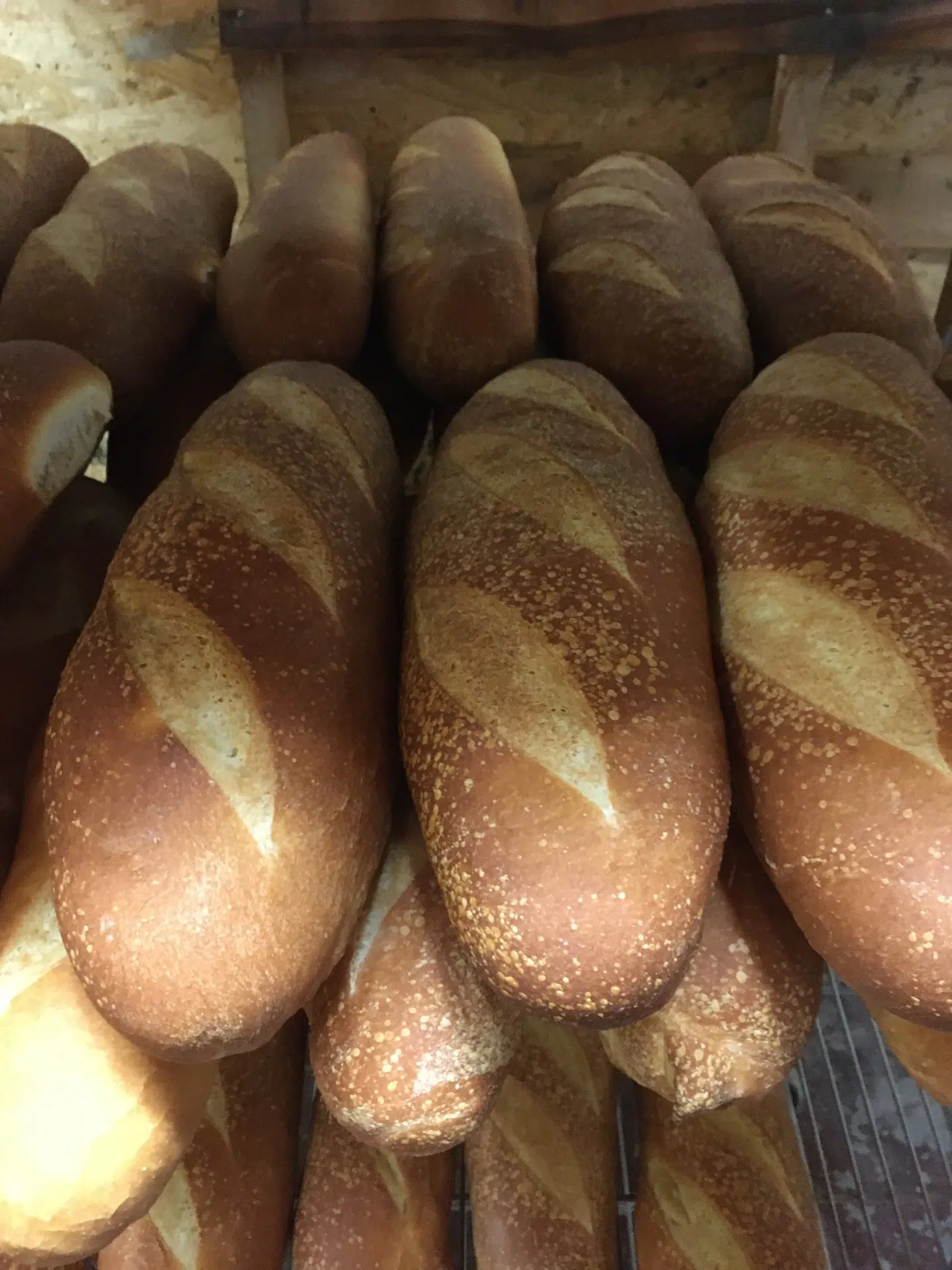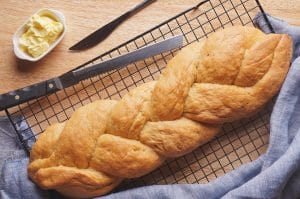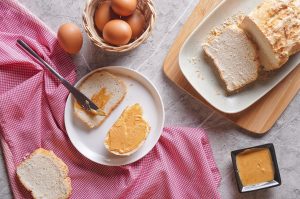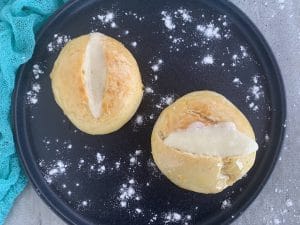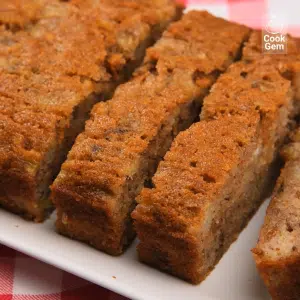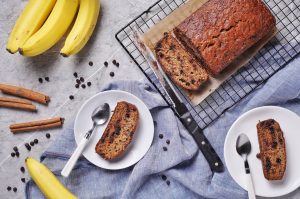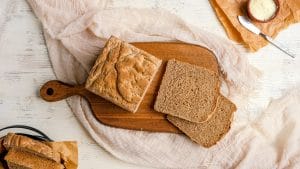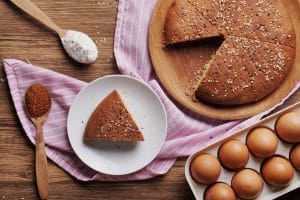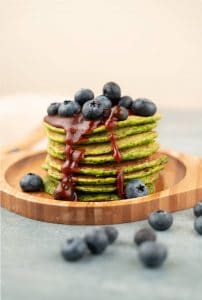All About Batard Bread
Important Note: When you buy through our links, we may earn a commission. As an Amazon Associate we earn from qualifying purchases. Content, pricing, offers and availability are subject to change at any time - more info.
If you walked through the bakery section of grocery stores or scanned menus at a restaurant and wondered what on earth batard bread is — you are not alone! The thing is, even not truly understanding what it is, doesn’t take away from its deliciousness. So what is batard bread all about, and how do you make it?
Batard bread is a French loaf-shaped similar to a football made with its primary ingredients: flour, water, and yeast. The bread runs about 6-12 inches long and around 4-6 inches wide. It can be made with regular flour or a sourdough starter and is considered lean bread.
You must understand where the batard bread originates and why it is different from other bread, like baguettes. Learning the unique tips and tricks on making batard bread will convert you, and we will discuss it all below.
- What Is Batard Bread?
- Where Does It Originate?
- Where Does It Get Its Name?
- How Do You Eat It?
- What Makes It Unique?
- Is It The Same As Baguette?
- Primary Ingredients
- Notes & Tips
- All You Need To Know About Batard Bread
What Is Batard Bread?
The simple understanding of batard bread is that it is a lean bread shaped similar to a football and runs between 6-12 inches long with a width between 4-6 inches.
Batard bread is a tasty variant of the famous baguette loaf and adds fantastic flavor and functionality to your meals with its lightness and nutty mildness.
Where Does It Originate?
Batard bread originates from French cuisine. The French are famously known for their delicious bread and bakeries, so it is no surprise that the batard bread originates from one of the last classic-shaped bread that the French created.
Where Does It Get Its Name?
Since batard bread is from French cuisine — the name also originates from the French dialect.
The bread was one of the last classic shapes that the French formed and is a cross between and baguette and a boule (round-shaped) loaf. They consider it to be a half-bred variant.
Batard translates to “bastard” in English, which, apart from illegitimate child, also means untypical or irregular. It describes the batard bread version perfectly.
How Do You Eat It?
There are several delicious ways you can eat batard bread. Take a look at some below:
- Sliced with butter: Slice the loaf into thick oval rounds and spread some butter on it. You can toast it before spreading butter.
- Sliced with cheese: Slice the bread into thick rounds and spread your cheese of choice.
- Sliced with toppings: Slice the bread into thick oval rounds and add any toppings you love, such as butter, cheese, pesto, sundried tomato paste, some veggies such as tomatoes, avo, and even some leafy greens.
- Garlic bread: Spread some garlic butter on the sliced batard and toast the bread in the oven. Enjoy it with pasta, soups, and salads.
- Make croutons: Chop up the batard bread, drizzle some olive oil, and seasonings of choice. Toast it in the oven for a couple of minutes, carefully observing, and you have homemade croutons for salads and soups.
- Make a sandwich: Cut the loaf in half and make one large sandwich or slice the bread into smaller pieces for regular-sized sandwiches. Use any filling you love like lettuce, tomatoes, turkey, pulled chicken, cheese, and the works.
- Be creative: you can use batard bread in any way you would use any other bread. Let your creativity flow and enjoy the flavors.
What Makes It Unique?
The uniqueness of batard bread stems primarily from its shape compared to other bread in its family. Batard bread is also unique because it is artisan bread.
Artisan bread encompasses various loaves of bread that have long fermentation and proofing times.
The bread in discussion — batard — has a long fermentation time but a regular proofing time. It also requires a long kneading session and simple, essential ingredients.
The above description may be similar for all artisan bread, but as mentioned, nothing compares to the fun, unique shape of batard bread.
Is It The Same As Baguette?
It is probably clear by now that batard bread is different from a baguette. Batard bread is shaped like a football, whereas a baguette is long and thin. A baguette will typically be over a foot long, and batard bread is shorter with a length of 6-12 inches. Batard bread also has about 4-6 inches of width, making them perfect for sandwiches, unlike the super-thin baguette.
Primary Ingredients
There are 4 essential and only ingredients required in batard bread:
Flour
You cant make bread without flour. Bread flour works best for baking batard bread. Whole wheat flour can work, but it may change the hydration level of the dough, which will alter the overall texture of the loaf.
All-purpose flour also works, but the results can differ slightly because bread flour has higher protein content, making the texture lighter — that is what you want to achieve.
Water
Water combines the dry ingredients to make the dough.
You want to use clean chlorine-free water in your batard bread. The water temperature should be about 110-115°F. You can use an instant-read thermometer to check.
If you do not have a thermometer, ensure the water is warm enough by placing your wrist in it without it feeling too hot.
Yeast
Yeast is essential when baking bread because, without yeast, your bread will not rise.
You can use any yeast of choice — active dry yeast is the best to use, but you need to activate it first.
Instant yeast also works and is convenient because you can add it directly to the mixture. Fresh yeast doesn’t last long in the refrigerator and loses vigor quickly.
Salt
Salt helps give the bread a slight flavor and tightens the gluten strands that form. That makes them stronger and enables the bread dough to hold carbon dioxide more effectively.
Only a tiny amount of salt goes into bread dough mixtures. You want to be careful because a little too much will make your whole bread salty and inedible.
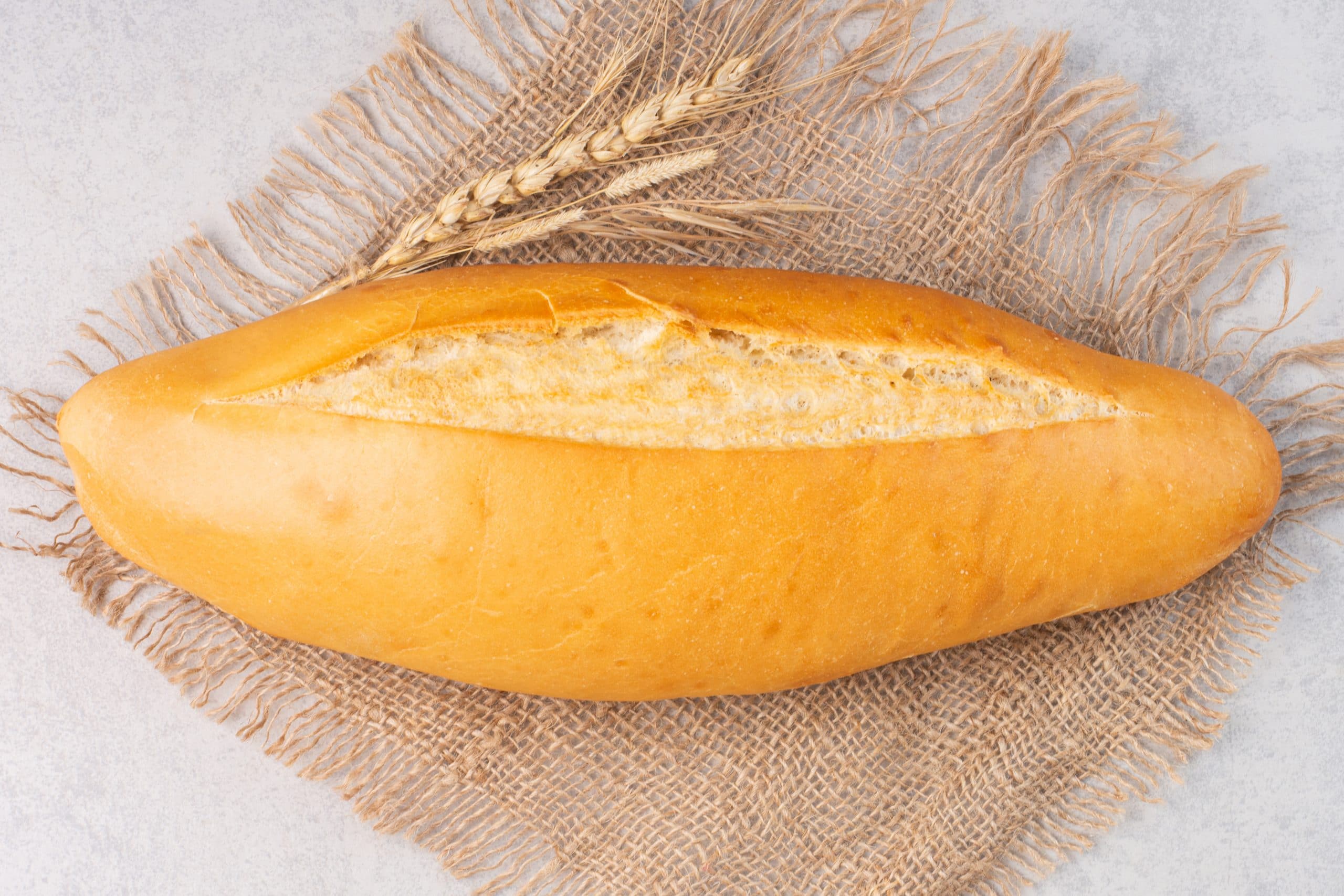
Ingredients
- 2 cups + 1 tbsp bread flour
- 11 oz water
- 1 packet active dry yeast 2 ½ tsp
- 2 tsp salt
Instructions
Making the dough
- Activate the yeast by mixing some warm water (about 110°F) and sugar with the yeast in a small bowl until dissolved. Keep it aside for 5-10 minutes or until you notice the mixture is foamy or bubbly on the top.
- Add the measured quantity of flour into a mixing bowl.
- Add the salt to the flour and whisk it well until combined.
- Pour the measured water into the dry ingredients and then the yeast mixture. Mix well with a spatula, spoon, dough scraper, or Danish dough whisk. You can use your hands too. The ingredients should be well combined.
- Once the flour is well hydrated, cover the bowl and allow it to autolyze for 30 minutes. If you use an electric mixer, skip this step.
Kneading the dough
- If you are comfortable kneading in the mixing bowl, you can do so. If not, sprinkle some flour on your flat working surface and remove the dough onto the dusted flour.
- Knead the dough continuously until it becomes smooth and does not stick to the sides of the bowl or the working surface. Do not keep adding flour, or else your dough will become tough and alter the final texture of the bread.
- The kneading method is stretching it forward and folding it back. Do that until the dough is smooth and supple. The process takes around 12-15 minutes.
Bulk rise the dough
- Once your dough is smooth and supple and no more sticky, transfer it to a greased bowl with ample headroom for the dough to double in size.
- Let the dough bulk rise for 2-3 hours or until it is double in volume. If you want to leave it overnight, leave it for about 45 minutes at room temperature and then transfer it to the fridge until the next day.
Pre-shaping
- Remove the bulk risen dough from the bowl and place it onto a lightly dusted flour surface.
- Divide your dough into 2 equal parts for medium-sized batard bread. You can weigh them for accuracy.
- Seal the edges underneath each piece of dough. It should look like smooth rounds.
- Place a damp kitchen cloth over the bread doughs and allow them to rest for 30-35 minutes before their final shaping.
Final shaping
- The dough is now ready for final shaping. Roughly flatten the dough rounds by pressing them with your fingertips or palms. It doesn’t need to be perfect or thinned out.
- Fold the top 2 edges like an envelope. Lift the top edges and fold them down to the middle. Gently seal it in. make another fold, and seal it again.
- Then do the same thing (fold and seal) with the bottom part of the dough. Gently press the edges down when sealing to secure it.
- Flip the dough around so the seam is facing down and the smooth side is facing upwards.
- Cup the dough using your hands, pulling the dough towards you to build tension on the surface and elongate the shape. Repeat the process but now push the dough away from you until you are satisfied with the shape and size. It should look like an oblong shape or thin football.
Proofing the dough
- Once you finish shaping your dough, gently lift the batard pieces and place them onto parchment paper. You can use a bread sling if you have one.
- Cover both your bread doughs with a damp kitchen towel and let it proof for about 1 hour or more at room temperature.
- Check the bread volume — it should look fuller and double in volume. The timeframe is less critical here.
- Towards the last 10-15 minutes of proofing, preheat your oven to 480°F.
Scoring the dough
- Score your bread however you prefer it. You can slash it once in the center, which is the most common way. A few horizontal slashes also work if you like the look that way.
Baking Batard Bread
- Gently lift your batard bread doughs and place them onto your baking trays. Transfer it to the preheated oven after spraying the bread with cold water.
- Place an oven-proof tray of water at the bottom of the oven to make steam for the first 5-8 minutes.
- Bake your bread for 15 minutes at 480°F and then reduce the heat to 450°F and bake it for an additional 10 minutes. The bread should have a golden-brown crust.
- Allow the bread to rest for 20-30 minutes at room temperature before slicing into it.
- Enjoy as desired!
Notes & Tips
- If you use instant yeast, add it directly to the dry ingredients. You do not need to activate the yeast with water and sugar.
- If your dough seems sticky initially, continue to knead but avoid adding additional flour. As you knead, the dough will smoothen and stop sticking. You have to give it time.
- You can use herbs and spices during the pre-shaping process by stretching the dough and then sprinkling the seasonings. Adding them earlier will hamper the gluten structure strengthening.
- You can use 5% of whole wheat flour if you need a substitute. Anything more will alter the texture of the bread.
- Increase or decrease the bake time according to how brown you like the crust of your dough. Keep a close watch towards the end to ensure your bread doesn’t burn.
All You Need To Know About Batard Bread
Now you have all the information required on delicious French batard bread, and you know how to make it. The next time you have a dinner party, you will look and sound like a professional French bread expert, and your home will smell like a bakery!
